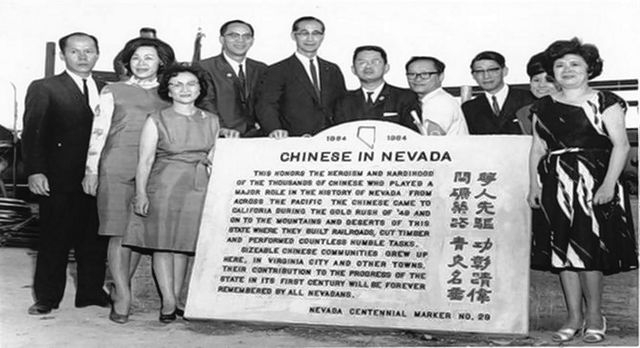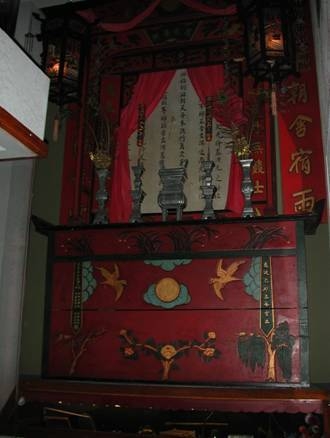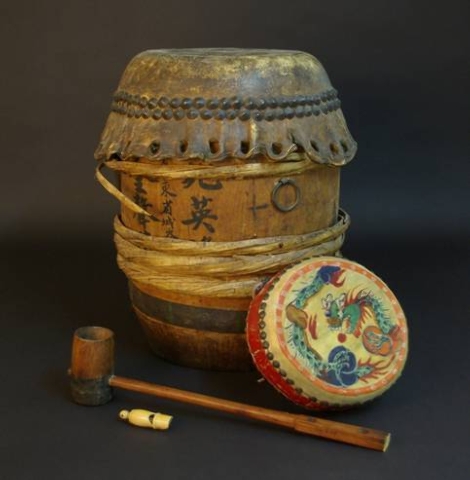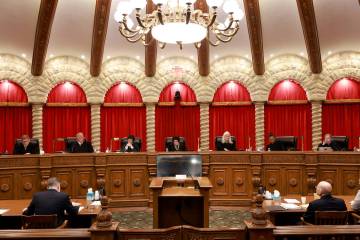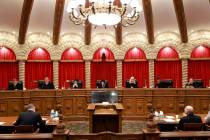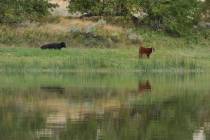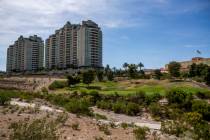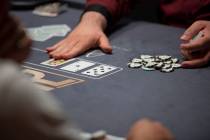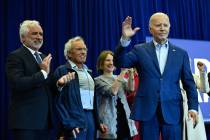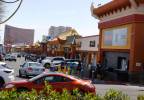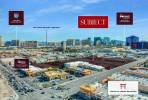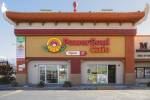Chinese immigrants helped build, feed early Nevada
Editor’s Note: Nevada 150 is a yearlong series highlighting the people, places and things that make up the history of the state.
On a stroll down Spring Mountain Road, there are many ways to immerse yourself in the Asian cultures it represents.
The area is known as Chinatown, but it’s home to Korean, Thai, Vietnamese and Japanese eateries, shops and cultural amenities.
Chinatown was developed nearly 20 years ago to preserve Asian heritage in Las Vegas. Although it offers a taste of that history, Nevada’s ties to Chinese migration date back to before it was even a state.
The story of Chinese migration to the United States as a whole starts in the late 1840s as hardships hit China.
According to Sue Fawn Chung, a history professor at UNLV, there were a series of trade disputes between China and the British Empire in the late 1830s.
At the time, China had a hold on the trade of tea, opium and silver and restrictions on foreign trade.
But things began to change once a treaty was reached over those restrictions, allowing Britain to open ports throughout China.
“Western imports started to eliminate traditional jobs,” Chung said.
CHINESE ORIGINS
With a lack of options, immigrants journeyed across the sea in search of new opportunities they heard about in America, especially the California Gold Rush.
But migrants were quickly ostracized from mining in California.
Moving inland from the West Coast in search of jobs, Chung said immigrants began arriving in Nevada in the 1850s.
“When coming to Nevada, they were asked to dig irrigation ditches for the miners in Genoa and Dayton,” she said.
The three trades they primarily took up in Nevada were mining, railroad construction and woodcutting.
“Those three industries were intimately connected,” she said.
According the Chung, 70 percent of the woodcutters in the Sierra Nevada were Chinese. This was a popular trade from the late 1870s until about 1910.
Chung said woodcutting complemented the railroad work.
By the time the California Pacific Railroad began construction in Reno around 1885, Chinese immigrants started to set up their settlements.
Woodcutters were needed to cut down trees to clear the way for roads and gather lumber for fuel.
“All these roads that were built, we take for granted,” Chung said. “Without Chinese workers, the West wouldn’t have been settled as fast as it was.”
Beyond these industries, Chinese immigrants branched out into a number of services, opening restaurants and laundries, Chung said. The restaurants proved particularly popular.
“Chinese workers were able to grow fresh fruits and vegetables,” she said. “So instead of people having canned meat or stews, people were able to get freshly cooked meals.”
OPPOSING FORCES
Although they weren’t welcomed by some residents, Chung said, many immigrants stayed in Nevada, starting families and putting down roots in the Silver State. Many communities naturally started to develop around the Central Pacific Railroad, which employed many Chinese workers.
“We have documentation that the railroads would sell pieces of land to the Chinese,” Chung said. “They began settling in railroad towns like Winnemucca, Lovelock, Carlin and Elko. These towns became a very important part of Chinese history.”
Although many of the houses were temporary, the communities would erect Chinese joss houses, a type of temple for worship.
Most of these structures were made with brick and built to last.
“These would become the social center,” Chung said. “They would create joss houses to remember their ancestors. It was a way to connect the past and present with the future.”
By 1900, Chinese-Americans were casting ballots in Nevada elections.
“We’ve come a long way,” Chung said. “Now we’ve had many Asian-Americans hold office, from secretary of state to city council.”
Along the way, migrants faced waves of anti-Chinese sentiment. Some resented them for taking jobs, especially during hard economic times.
Chung said in Truckee, Calif., near Lake Tahoe, a Chinese population of nearly 2,000 dwindled to 90 — and eventually down to just two — after people forced migrants out of town with threats and intimidation.
Some of the discrimination received official backing in the form of federal anti-Chinese legislation such as the Chinese Exclusion Act, which was signed into law in 1882.
The act put restrictions on the immigration of Chinese laborers. It was only supposed to last 10 years, but it was made permanent in 1902 and lingered until finally being repealed in 1943.
CARVING OUT COMMUNITIES
To preserve their history and culture, migrants and their American descendants established Chinatowns in cities throughout Nevada.
Chung said around the 1970s, the Las Vegas community sought to have a centralized location. But Chung said it wasn’t until the 1990s that something stable was developed.
James Chen, a Taiwanese-born immigrant, decided to open the Las Vegas Chinatown Plaza in 1995.
Chen bought seven acres on Spring Mountain to open the Chinatown Plaza, which was home to authentic Chinese restaurants, retail shops and the first Mandarin bookstore in Nevada.
From there, more and more Asian-owned businesses began to sprout up. Chinatown now stretches well beyond the original plaza, forming a commercial hub of markets, restaurants and other cultural amenities that reflect various Asian cultures.
But even as new storefronts cropped up, history was lost. Although there are artifacts, photos and stories from the migration of the Chinese, much of what was built by those pioneers from the Far East has been swept away.
Bob Nylen, the Nevada State Museum curator, said no one really took into consideration preserving historical buildings.
“I wish someone would have thought of it at the time,” he said. “It would be great to have them.”
Chung said joss houses were razed.
“There was no one around to take care of them,” she said. “They were viewed as non-Christian and torn down.”
The last ones in Reno and Winnemucca were destroyed in the 1950s when the Chinese population dropped, she said.
“It’s a shame they weren’t protected,” she added. “It was an important part of our history.”
At the Nevada State Museum in Carson City, Nylen said some of the history from that time is preserved. Among the artifacts is an altar from one of the joss houses.
Using photos and drawings from someone who lived in the Chinatown in Winnemucca, the museum was able to create a diorama of the community.
“I remember a while back we had a man who grew up in one of those communities,” Nylen said.
“He said we did a great job recreating what the community looked like. That’s such a great complement.”
Contact reporter Michael Lyle at mlyle@reviewjournal.com or 702-387-5201. Find him on Twitter: @mjlyle



